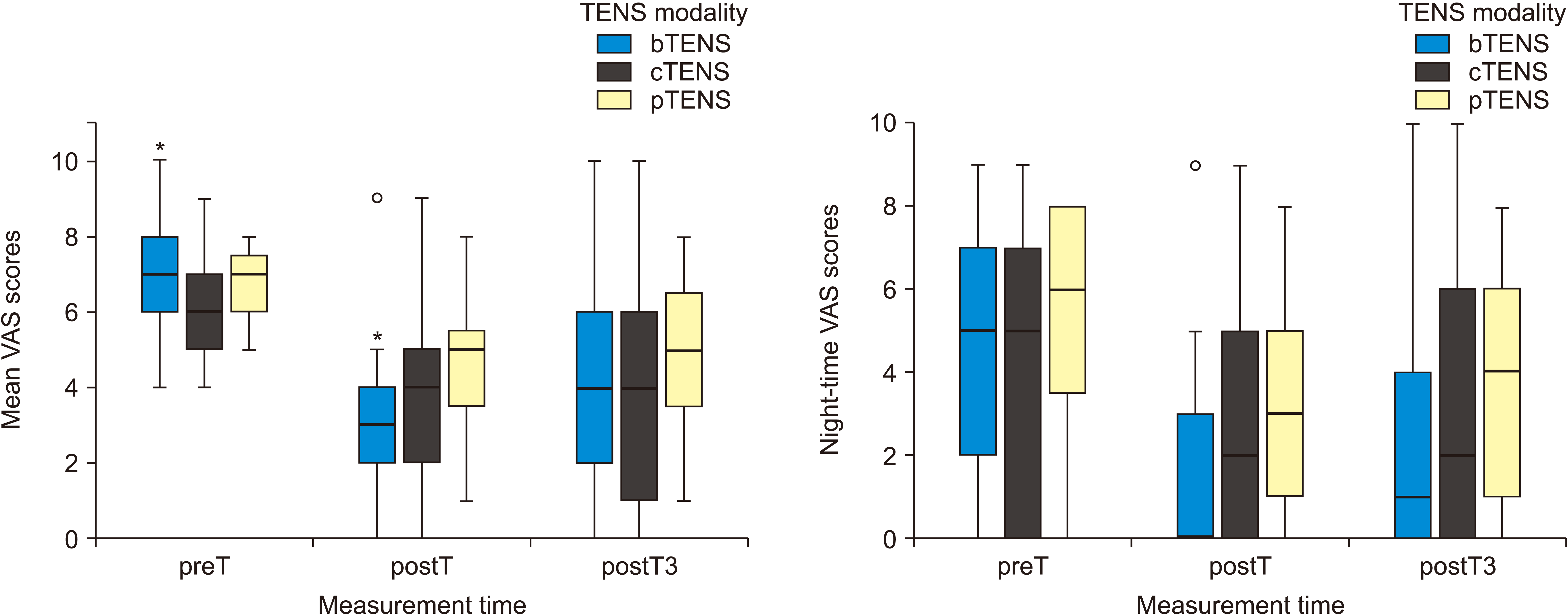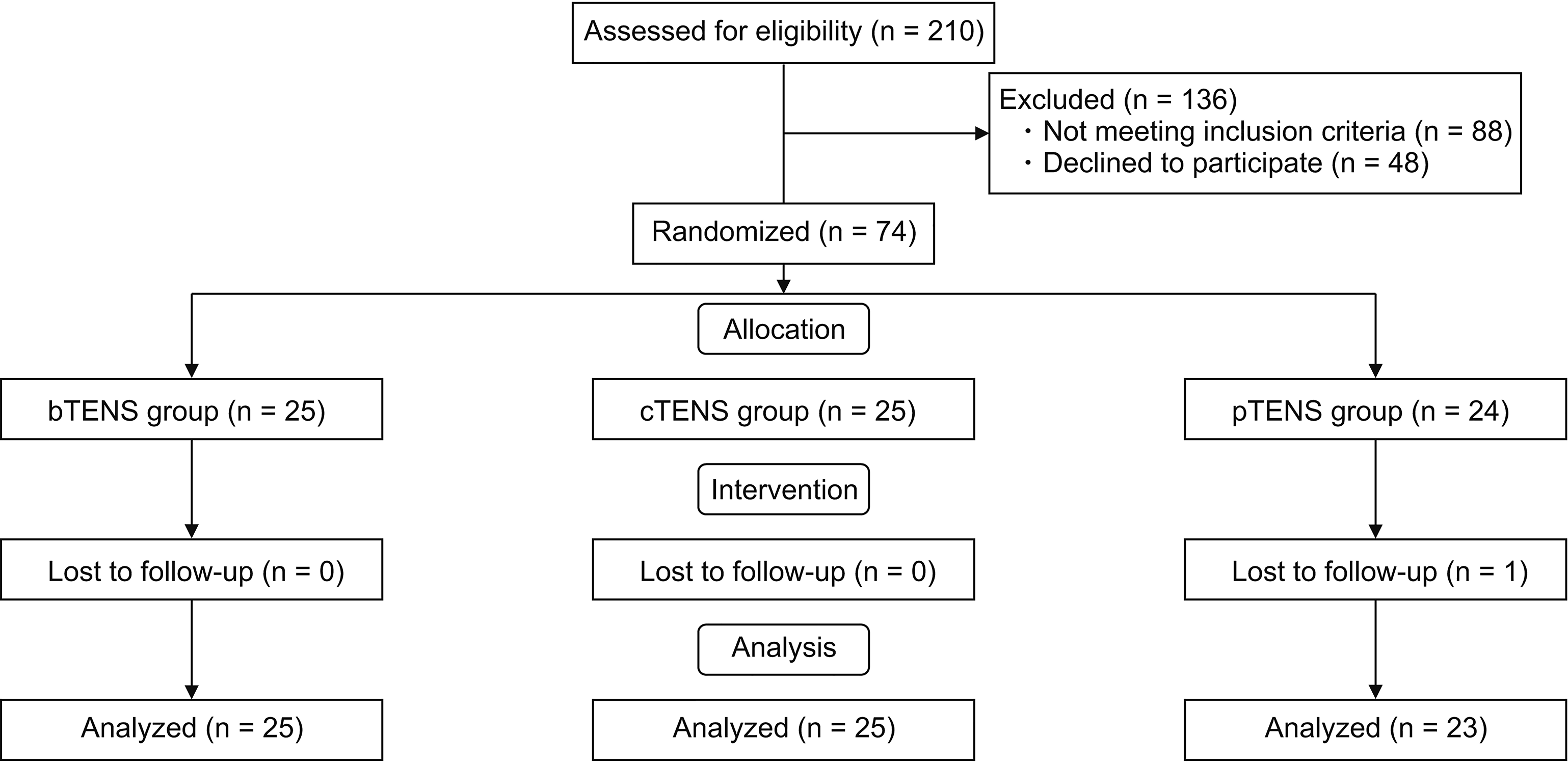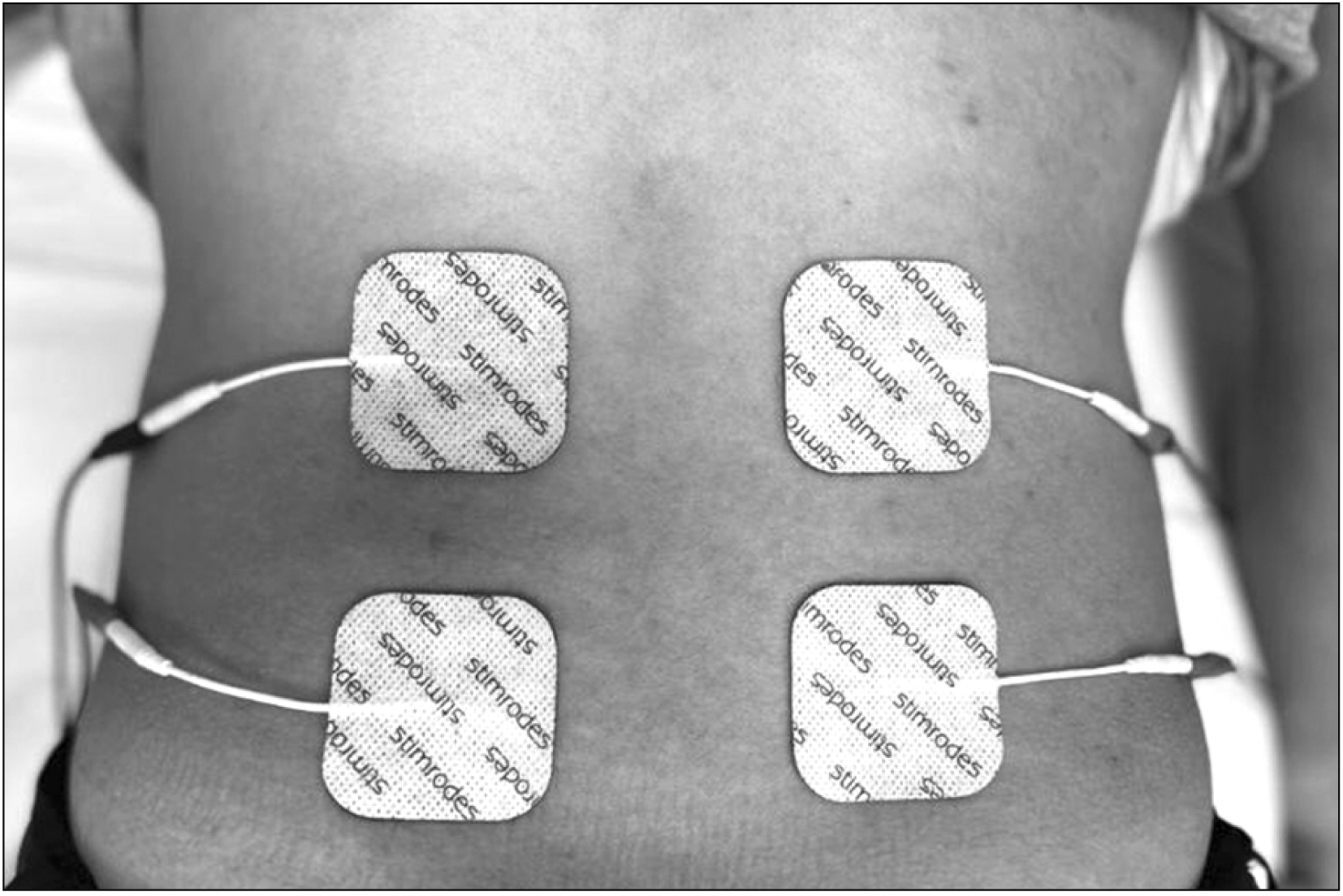2. Hoy D, Brooks P, Blyth F, Buchbinder R. 2010; The epidemiology of low back pain. Best Pract Res Clin Rheumatol. 24:769–81. DOI:
10.1016/j.berh.2010.10.002. PMID:
21665125.

4. Kamper SJ, Apeldoorn AT, Chiarotto A, Smeets RJ, Ostelo RW, Guzman J, et al. 2015; Multidisciplinary biopsychosocial rehabilitation for chronic low back pain: Cochrane systematic review and meta-analysis. BMJ. 350:h444. DOI:
10.1136/bmj.h444. PMID:
25694111. PMCID:
PMC4353283.

5. Will JS, Bury DC, Miller JA. 2018; Mechanical low back pain. Am Fam Physician. 98:421–8. PMID:
30252425.
6. Freynhagen R, Baron R. 2009; The evaluation of neuropathic components in low back pain. Curr Pain Headache Rep. 13:185–90. DOI:
10.1007/s11916-009-0032-y. PMID:
19457278.

7. Morlion B. 2011; Pharmacotherapy of low back pain: targeting nociceptive and neuropathic pain components. Curr Med Res Opin. 27:11–33. DOI:
10.1185/03007995.2010.534446. PMID:
21083513.

8. Treede RD, Jensen TS, Campbell JN, Cruccu G, Dostrovsky JO, Griffin JW, et al. 2008; Neuropathic pain: redefinition and a grading system for clinical and research purposes. Neurology. 70:1630–5. DOI:
10.1212/01.wnl.0000282763.29778.59. PMID:
18003941.

9. Jensen TS, Baron R, Haanpää M, Kalso E, Loeser JD, Rice ASC, et al. 2011; A new definition of neuropathic pain. Pain. 152:2204–5. DOI:
10.1016/j.pain.2011.06.017. PMID:
21764514.

10. Kaki AM, El-Yaski AZ, Youseif E. 2005; Identifying neuropathic pain among patients with chronic low-back pain: use of the Leeds Assessment of Neuropathic Symptoms and Signs pain scale. Reg Anesth Pain Med. 30:422–8. DOI:
10.1097/00115550-200509000-00002. PMID:
16135345.

11. Mehra M, Hill K, Nicholl D, Schadrack J. 2012; The burden of chronic low back pain with and without a neuropathic component: a healthcare resource use and cost analysis. J Med Econ. 15:245–52. DOI:
10.3111/13696998.2011.642090. PMID:
22136441.

13. Chou R, Deyo R, Friedly J, Skelly A, Hashimoto R, Weimer M, et al. 2017; Nonpharmacologic therapies for low back pain: a systematic review for an American College of Physicians Clinical Practice Guideline. Ann Intern Med. 166:493–505. DOI:
10.7326/M16-2459. PMID:
28192793.

14. Khadilkar A, Odebiyi DO, Brosseau L, Wells GA. 2008; Transcutaneous electrical nerve stimulation (TENS) versus placebo for chronic low-back pain. Cochrane Database Syst Rev. 2008:CD003008. DOI:
10.1002/14651858.CD003008.pub3. PMID:
18843638. PMCID:
PMC7138213.

15. Vance CG, Dailey DL, Rakel BA, Sluka KA. 2014; Using TENS for pain control: the state of the evidence. Pain Manag. 4:197–209. DOI:
10.2217/pmt.14.13. PMID:
24953072. PMCID:
PMC4186747.

17. Sluka KA, Walsh D. 2003; Transcutaneous electrical nerve stimulation: basic science mechanisms and clinical effectiveness. J Pain. 4:109–21. DOI:
10.1054/jpai.2003.434. PMID:
14622708.

18. Moran F, Leonard T, Hawthorne S, Hughes CM, McCrum-Gardner E, Johnson MI, et al. 2011; Hypoalgesia in response to transcutaneous electrical nerve stimulation (TENS) depends on stimulation intensity. J Pain. 12:929–35. DOI:
10.1016/j.jpain.2011.02.352. PMID:
21481649.

20. Topuz O, Özfidan E, Ozgen M, Ardic F. 2004; Efficacy of transcutaneous electrical nerve stimulation and percutaneous neuromodulation therapy in chronic low back pain. J Back Musculoskelet Rehabil. 17:127–33. DOI:
10.3233/BMR-2004-173-407.

21. Price DD, McGrath PA, Rafii A, Buckingham B. 1983; The validation of visual analogue scales as ratio scale measures for chronic and experimental pain. Pain. 17:45–56. DOI:
10.1016/0304-3959(83)90126-4. PMID:
6226917.

22. Bouhassira D, Attal N, Alchaar H, Boureau F, Brochet B, Bruxelle J, et al. 2005; Comparison of pain syndromes associated with nervous or somatic lesions and development of a new neuropathic pain diagnostic questionnaire (DN4). Pain. 114:29–36. DOI:
10.1016/j.pain.2004.12.010. PMID:
15733628.

23. Hudson-Cook N, Tomes-Nicholson K, Breen A. Roland MO, Jenner JR, editors. 1989. A revised Oswestry disability questionnaire. Back pain: new approaches to rehabilitation and education. Manchester University Press;Manchester: p. 187–204.
24. Hisli N. 1988; [A study on the validity of Beck depression inventory]. Psikol Derg. 6:118–22. Turkish.
25. Milne S, Welch V, Brosseau L, Saginur M, Shea B, Tugwell P, et al. 2001; Transcutaneous electrical nerve stimulation (TENS) for chronic low back pain. Cochrane Database Syst Rev. 2:CD003008. DOI:
10.1002/14651858.CD003008. PMID:
16034883.
26. Brosseau L, Milne S, Robinson V, Marchand S, Shea B, Wells G, et al. 2002; Efficacy of the transcutaneous electrical nerve stimulation for the treatment of chronic low back pain: a meta-analysis. Spine (Phila Pa 1976). 27:596–603. DOI:
10.1097/00007632-200203150-00007. PMID:
11884907.

27. Khadilkar A, Milne S, Brosseau L, Robinson V, Saginur M, Shea B, et al. 2005; Transcutaneous electrical nerve stimulation (TENS) for chronic low-back pain. Cochrane Database Syst Rev. 3:CD003008. DOI:
10.1002/14651858.CD003008.pub2. PMID:
16034883.

28. Marchand S, Charest J, Li J, Chenard JR, Lavignolle B, Laurencelle L. 1993; Is TENS purely a placebo effect? A controlled study on chronic low back pain. Pain. 54:99–106. DOI:
10.1016/0304-3959(93)90104-W. PMID:
8378107.

29. Jarzem PF, Harvey EJ, Arcaro N, Kaczorowski J. 2005; Transcutaneous electrical nerve stimulation [TENS] for short-term treatment of low back pain-randomized double blind crossover study of sham versus conventional TENS. J Musculoskelet Pain. 13:11–7. DOI:
10.1300/J094v13n02_03.

30. van der Spank JT, Cambier DC, De Paepe HM, Danneels LA, Witvrouw EE, Beerens L. 2000; Pain relief in labour by transcutaneous electrical nerve stimulation (TENS). Arch Gynecol Obstet. 264:131–6. DOI:
10.1007/s004040000099. PMID:
11129512.

31. Dubinsky RM, Miyasaki J. 2010; Assessment: efficacy of transcutaneous electric nerve stimulation in the treatment of pain in neurologic disorders (an evidence-based review): report of the Therapeutics and Technology Assessment Subcommittee of the American Academy of Neurology. Neurology. 74:173–6. DOI:
10.1212/WNL.0b013e3181c918fc. PMID:
20042705.

32. Jin DM, Xu Y, Geng DF, Yan TB. 2010; Effect of transcutaneous electrical nerve stimulation on symptomatic diabetic peripheral neuropathy: a meta-analysis of randomized controlled trials. Diabetes Res Clin Pract. 89:10–5. DOI:
10.1016/j.diabres.2010.03.021. PMID:
20510476.

33. Pieber K, Herceg M, Paternostro-Sluga T. 2010; Electrotherapy for the treatment of painful diabetic peripheral neuropathy: a review. J Rehabil Med. 42:289–95. DOI:
10.2340/16501977-0554. PMID:
20461329.
34. Singla S, Prabhakar V, Singla RK. 2011; Role of transcutaneous electric nerve stimulation in the management of trigeminal neuralgia. J Neurosci Rural Pract. 2:150–2. DOI:
10.4103/0976-3147.83580. PMID:
21897677. PMCID:
PMC3159350.

35. Yameen F, Shahbaz NN, Hasan Y, Fauz R, Abdullah M. 2011; Efficacy of transcutaneous electrical nerve stimulation and its different modes in patients with trigeminal neuralgia. J Pak Med Assoc. 61:437–9. PMID:
22204173.
36. Forst T, Nguyen M, Forst S, Disselhoff B, Pohlmann T, Pfützner A. 2004; Impact of low frequency transcutaneous electrical nerve stimulation on symptomatic diabetic neuropathy using the new Salutaris device. Diabetes Nutr Metab. 17:163–8. PMID:
15334794.
37. Ghoname EA, White PF, Ahmed HE, Hamza MA, Craig WF, Noe CE. 1999; Percutaneous electrical nerve stimulation: an alternative to TENS in the management of sciatica. Pain. 83:193–9. DOI:
10.1016/S0304-3959(99)00097-4. PMID:
10534590.

39. Tsang A, Von Korff M, Lee S, Alonso J, Karam E, Angermeyer MC, et al. 2008; Common chronic pain conditions in developed and developing countries: gender and age differences and comorbidity with depression-anxiety disorders. J Pain. 9:883–91. DOI:
10.1016/j.jpain.2008.05.005. PMID:
18602869.

41. Oksuz E. 2006; Prevalence, risk factors, and preference-based health states of low back pain in a Turkish population. Spine (Phila Pa 1976). 31:E968–72. DOI:
10.1097/01.brs.0000247787.25382.3c. PMID:
17139213.

42. Kara H, Abay E. 2000; [Psychiatric approach to chronic pain]. Anadolu Psikiyatri Derg. 1:89–99. Turkish.
43. Vetrugno R, Liguori R, Cortelli P, Montagna P. 2003; Sympathetic skin response: basic mechanisms and clinical applications. Clin Auton Res. 13:256–70. DOI:
10.1007/s10286-003-0107-5. PMID:
12955550.
44. Erdem Tilki H, Coşkun M, Unal Akdemir N, Incesu L. 2014; Axon count and sympathetic skin responses in lumbosacral radiculopathy. J Clin Neurol. 10:10–6. DOI:
10.3988/jcn.2014.10.1.10. PMID:
24465257. PMCID:
PMC3896643.

45. El-Badawy MA, El Mikkawy DM. 2016; Sympathetic dysfunction in patients with chronic low back pain and failed back surgery syndrome. Clin J Pain. 32:226–31. DOI:
10.1097/AJP.0000000000000250. PMID:
25968450.

46. Perry J, Green A, Singh S, Watson P. 2015; A randomised, independent groups study investigating the sympathetic nervous system responses to two manual therapy treatments in patients with LBP. Man Ther. 20:861–7. DOI:
10.1016/j.math.2015.04.011. PMID:
25920338.

47. Perry J, Green A. 2018; A longitudinal observational clinical study of neurophysiological and patient-reported responses to a program of physiotherapy for acute and subacute low back pain. J Manipulative Physiol Ther. 41:456–66. DOI:
10.1016/j.jmpt.2017.11.003. PMID:
30173731.

48. Okuyucu EE, Turhanoğlu AD, Guntel M, Yılmazer S, Savaş N, Mansuroğlu A. 2018; Does transcutaneous nerve stimulation have effect on sympathetic skin response? J Clin Neurosci. 47:160–2. DOI:
10.1016/j.jocn.2017.08.033. PMID:
29017745.

49. Aramaki S, Kira Y, Hirasawa Y. 1997; A study of the normal values and habituation phenomenon of sympathetic skin response. Am J Phys Med Rehabil. 76:2–7. DOI:
10.1097/00002060-199701000-00002. PMID:
9036904.






 PDF
PDF Citation
Citation Print
Print





 XML Download
XML Download